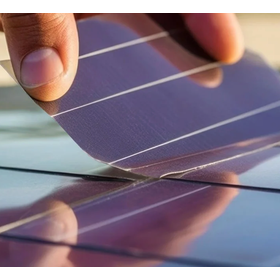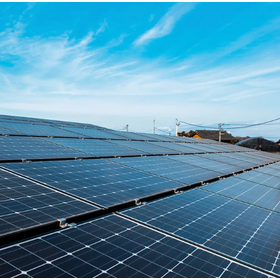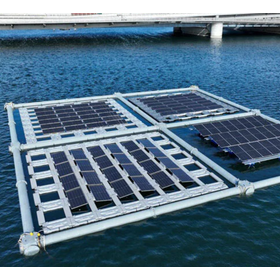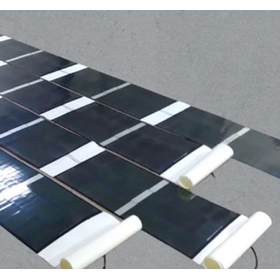Just by renting out the roof, you can generate new net profit and also earn rental income from rooftop solar power.
With zero initial investment and zero risk, you can capitalize on the roofs of factories and warehouses, utilizing them as a new pillar of net profit.
【Our Construction Numbers and Client List】 A total construction cost of 908.4 billion yen, with 83 solar power plants built over 12 years. Clients include Sharp, Panasonic, Daiwa House, Nomura Securities, Mitsubishi HC Capital, JA Mitsui Leasing, DMM.com, KKR, Macquarie Capital, Canadian Solar, Trina Solar, J Holdings, RE100 Power, Excelsior Japan, WindSmile, B&M Asset Management, AD Works, Sparks Asset Management, Etrion, and many others. *For more details, please refer to the related links or feel free to contact us. New Revenue from Roof Leasing Model By simply leasing idle assets (roofs), we can earn rental income of approximately 100 to 200 yen per square meter annually. For example, with an 8,000 square meter roof, this translates to stable annual revenue of about 800,000 to 1.6 million yen. *This may vary depending on regional conditions and contract methods.
basic information
〇Reduction of electricity costs (cost-cutting) Reduce electricity bills by 17-28% with industrial self-consumption solar power Immediate effect, with benefits felt right after installation 〇Net profit (rental income) Earn fixed rental income just by leasing your roof Becomes a "new pillar of profit" with no risk and reduced manpower
Price range
Delivery Time
Applications/Examples of results
- Gunma Prefecture Warehouse Roof Leasing Case Installation Capacity: Approximately 500 kW (PPA Model) Owner Revenue: Annual Rent Approximately 1.2 million yen (Roof Leasing) "Secure new rental income from unused roofs without taking on risks."
catalog(4)
Download All Catalogs
News about this product(5)
-

The future of next-generation energy opened up by perovskite batteries.
~ Are lightweight, flexible solar panels becoming mainstream? ~ Film-type perovskite solar cells, organic thin-film solar cells, and lightweight crystalline silicon solar cells are all lightweight and flexible solar panels that stand apart from the traditional "heavy and rigid" panels and are now vying for the spotlight. 〇 Why is "lightweight" gaining attention now? Conventional solar panels are heavy, and due to structural limitations, there have been many cases where they cannot be installed on roofs. This has been particularly true for small to medium-sized factories, warehouses, and hospitals in urban areas, where weight restrictions have become a barrier to installation. This is where the "lightweight and flexible" new panels come into focus. 〇 The key to full-scale development towards 2040: "Perovskite solar cells" The film-type perovskite solar cells are expected to drive future growth. - If you're considering installation, now is the chance! Kenneth Energy Development supports companies in reducing electricity costs and achieving environmental management through industrial rooftop solar power generation.
-

Can power generation be achieved even in extreme cold? A demonstration experiment of perovskite solar cells has started in Hokkaido.
Mitsubishi HC Capital announced that it will begin a demonstration experiment of perovskite solar cells for cold regions in collaboration with Enecoat Technologies and Hokkaido Electric Power. The experiment will take place in Hokkaido, where the harsh cold can drop to minus 25°C, and will thoroughly examine the durability and power generation performance of the solar cells under such conditions. Starting in August 2025, the performance will be checked by artificially recreating an extreme cold environment in Hokkaido Electric Power's "constant temperature and humidity room." After that, the solar cells will be installed in actual homes to test their power generation performance on windows and exterior walls. The experiment is expected to continue until October 2026. Mitsubishi HC will analyze the economic aspects, Enecoat will handle the manufacturing of the solar cells, and Hokkaido Electric Power will provide facilities and data analysis. By leveraging each company's strengths, they aim to realize solar cells that can be used in snowy regions. Incidentally, YKK AP is also conducting a similar demonstration at the Sapporo Snow Festival, confirming that power generation is possible even with vertical installation, which may accelerate the utilization of renewable energy in snow-covered areas. - If you are considering installation, now is the time! Kenneth Energy Development supports companies in reducing electricity costs and achieving environmental management through industrial rooftop solar power generation.
-

The obligation to recycle solar panels has been postponed - JCLP expresses concerns.
A bill to mandate the recycling of solar panels was postponed from being submitted to the National Diet, prompting the environmental economic organization **Japan Climate Leaders Partnership (JCLP)** to publish a statement expressing strong concerns on September 18. The background to this is the expectation that the annual disposal of solar panels will increase to about 500,000 tons starting in the late 2030s. The government had been considering a system to mandate recycling, but difficulties in adjusting the cost burden led to the postponement. JCLP pointed out the need for the early establishment of a flexible and effective system for the effective use of resources, prevention of illegal dumping, and the creation of domestic employment. They stated their commitment to proactively work towards achieving both decarbonization and a circular economy. Additionally, they strongly urged the government to design a system that allows all power generation companies to participate in recycling, stating that there are limits to what can be achieved through the voluntary efforts of businesses alone. Furthermore, Environment Minister Asao announced a policy for reviewing the system at a press conference in August, explaining that consistency with existing recycling laws is a challenge.
-

Generating electricity on the sea! Mitsui Sumitomo Construction is conducting a demonstration experiment of "floating solar power."
Mitsui Sumitomo Construction, in collaboration with Chugoku Electric Power and Chuden Technical Consultant, will work on research for a "floating solar power generation system (floating offshore solar)." This project has been officially adopted as a supported initiative by NEDO, a national research institution. Mitsui Sumitomo Construction, which has built a track record with "floating solar" installations on water surfaces such as reservoirs, is now taking the next step by challenging power generation at sea. This time, they will install panels with an output of approximately 50 kW in the waters off Osaki Kamijima in Hiroshima Prefecture to demonstrate whether they can withstand harsh natural environments such as changes in waves, wind, tide heights, and salt damage. The experiments are set to begin in the latter half of fiscal year 2025 and are expected to continue until the end of fiscal year 2028. They will assess whether safe and stable power generation can be achieved at sea and whether it can eventually become a viable business. The company has already conducted small-scale experiments in Tokyo Bay, and this initiative marks a significant step toward full-scale commercialization. We will continue to pay attention to the new possibilities of solar power expanding from "land" to "sea." - If you are considering installation, now is the chance! Kenneth Energy Development supports companies in reducing electricity costs and achieving environmental management through industrial rooftop solar power generation.
-

Next-generation solar panels appear on airport roofs.
The latest "Calcophyllite Solar Cells" have been installed at the international terminal building of Fukuoka Airport. These solar cells are characterized by their ultra-lightweight and thin design, weighing only 0.8 kg per square meter. Because they can be installed without putting a burden on the roofs of buildings and facilities, they are attracting attention as a technology that greatly expands the possibilities of solar power generation in the future. The installation and demonstration experiments will be conducted by Kyuden Mirai Energy. The solar cells are provided by PXP Corporation, the construction is handled by Kyudenko, and the installation support is provided by JGC Corporation, with performance and construction feasibility being verified from December 2025 to February 2026. Particularly in places like airports, the shape of the roof and the impact of reflected light are also important verification points. This time, practical usability will be confirmed, including those factors. Fukuoka Airport is also planning an exhibition to introduce the details of the experiment. The day may soon come when lightweight and high-performance solar cells become the "norm" in future buildings.
Distributors
Kenneth Energy Development Co., Ltd. is a company aiming to promote renewable energy, operating in the following three main areas: 〇 Energy development business centered on solar power generation - Comprehensive support from planning, design, construction, to operation of rooftop and ground-mounted solar power plants - Assistance with connection negotiations with power companies and various permit applications, ensuring a smooth introduction even for first-timers 〇 Electrical equipment construction business - Handling a wide variety of electrical work, including new construction and renovation of commercial facilities and apartments - Broad coverage of all equipment, including lighting, air conditioning, emergency power supply, water supply and drainage, and gas piping 〇 Real estate and construction support business - Involved in infrastructure development and project support related to construction, leveraging a comprehensive construction system as a strength Additionally, many qualified professionals, such as electrical chief engineers and construction management engineers, are on staff, providing strong support for companies in their decarbonization efforts and cost reduction with high technical skills and reliable responsiveness. In the solar power-related business and real estate-related business, we can provide a wide range of support from project sourcing and investigation stages to execution stages such as EPC, tailored to your needs.






